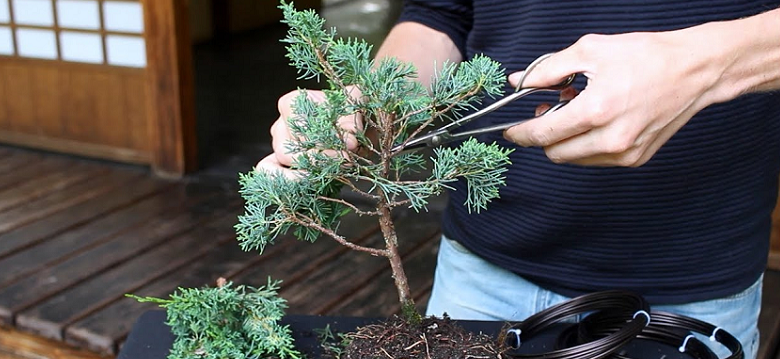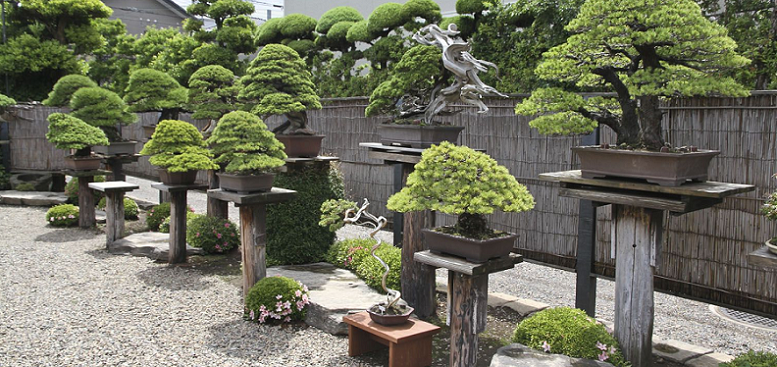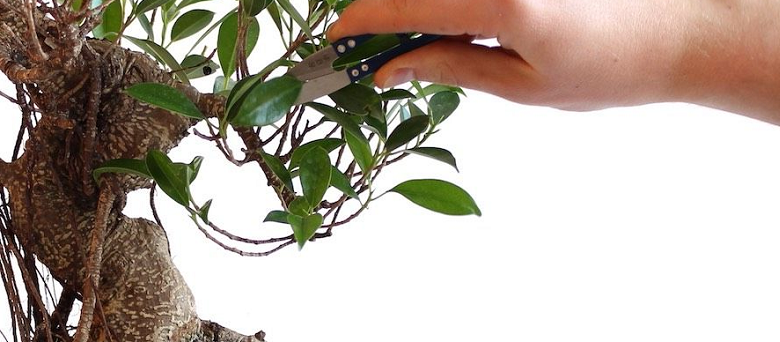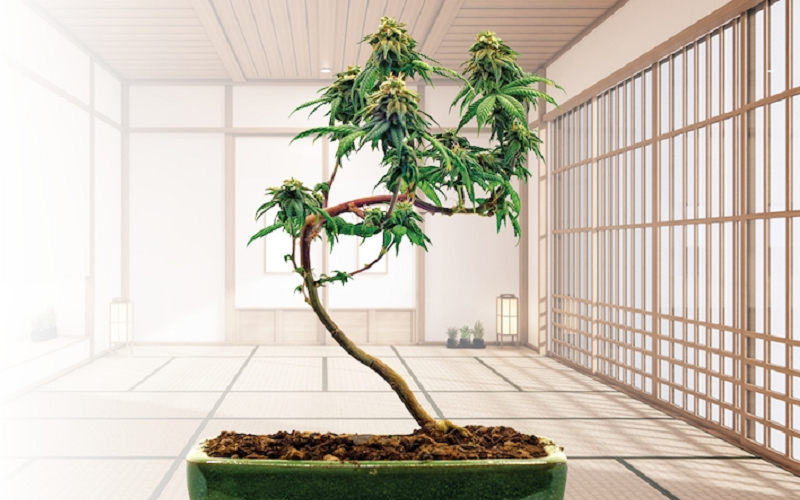Bonsai is a delicate art form that combines the principles of horticulture, botany, and design. It has been practiced for centuries in Japan and other parts of the world, and is now enjoyed by millions of enthusiasts worldwide. Bonsai cultivation is both an art and a science, requiring a deep understanding of plant biology, proper pruning techniques, and a keen eye for aesthetic design.
What Is Bonsai Cultivation?
Bonsai cultivation is the art and practice of growing, nurturing, and training miniature trees to create aesthetically pleasing and artistically designed potted plants. It originated in Japan over a thousand years ago and has since spread to become a popular hobby and art form around the world.
Bonsai cultivation involves carefully selecting and growing specific species of trees, pruning and shaping their branches and leaves, and arranging them in pots to create a miniature version of a full-sized tree in the natural landscape. The goal is to create a harmonious balance between the tree, the pot, and the overall composition, showcasing the beauty of nature in a compact form.
The Science of Bonsai Cultivation
The science of Bonsai cultivation involves understanding the biology and anatomy of the plants used in Bonsai, as well as the environmental conditions necessary for their growth and health.

Understanding Plant Biology and Anatomy
In Bonsai cultivation, it is important to have a basic understanding of plant biology and anatomy, as it plays a crucial role in determining the overall health and growth of the Bonsai tree. Understanding plant anatomy involves recognizing the different parts of the tree, such as the roots, trunk, branches, leaves, and buds. Knowing how these parts function and interact with each other is essential to caring for a Bonsai tree.
For example, the roots absorb water and nutrients from the soil, while the leaves produce energy through photosynthesis. The trunk and branches support the tree’s structure and provide pathways for the movement of water and nutrients. By understanding these basic plant biology concepts, Bonsai enthusiasts can make informed decisions about the care and maintenance of their trees, such as choosing the right soil mix, providing adequate light and water, and pruning and shaping branches to encourage healthy growth.
In addition, understanding plant anatomy also helps Bonsai enthusiasts make decisions about the overall design of their tree, such as which branches to remove, where to make cuts, and how to create a balanced and aesthetically pleasing composition. By combining a scientific understanding of plant biology and anatomy with an artistic eye, Bonsai enthusiasts can create truly stunning and captivating Bonsai compositions.
Soil and Potting Considerations
In Bonsai cultivation, soil and potting are critical considerations for the health and longevity of the Bonsai tree. Proper soil mixture and potting help ensure adequate drainage and aeration, as well as the provision of necessary nutrients to the tree.
For Bonsai trees, it is important to use a soil mix that is well-draining, yet retains enough moisture to keep the roots hydrated. Bonsai soil often contains a mixture of organic and inorganic materials, such as bark, peat, perlite, and sand. This mix helps prevent soil compaction and provides the right balance of moisture and air to the roots.
Potting is also an important consideration in Bonsai cultivation. The pot should be appropriately sized for the tree, with enough room for the roots to grow and expand, yet not so large that the tree becomes unstable. The pot should also have adequate drainage holes to allow excess water to escape and prevent root rot.
Understanding the science of soil and potting considerations in Bonsai cultivation is critical to the health and success of the Bonsai tree. By selecting the right soil mixture and potting the tree appropriately, Bonsai enthusiasts can ensure that their trees receive the necessary nutrients and water for healthy growth and longevity.

Watering and Fertilizing Techniques
Watering and fertilizing are critical components of Bonsai cultivation, and proper techniques can greatly impact the health and appearance of the Bonsai tree. Understanding the specific needs of each species of tree is important when it comes to watering and fertilizing, as different species have different requirements.
Watering is one of the most important aspects of Bonsai care. Over-watering or under-watering can have serious consequences for the health of the tree. Bonsai trees need to be watered regularly, but the frequency and amount of water required can vary depending on factors such as the species of tree, the time of year, and the climate. Proper watering techniques include using a watering can or hose with a fine nozzle, avoiding water getting into the crown of the tree, and checking the soil regularly to ensure that it is neither too dry nor too moist.
Fertilizing is also an important aspect of Bonsai care, as it provides the tree with the necessary nutrients for healthy growth. Different species of trees have different fertilizer requirements, and it’s important to understand these requirements in order to make informed decisions about fertilizing. There are many types of fertilizer available for Bonsai trees, including organic and inorganic options. Bonsai enthusiasts should also be aware of the timing of fertilizing, as certain species of trees may require fertilizer more or less frequently than others.
Watering and fertilizing techniques play a crucial role in the health and success of a Bonsai tree. By understanding the specific needs of each species of tree and implementing proper watering and fertilizing techniques, Bonsai enthusiasts can ensure that their trees receive the care and nutrition they need for healthy growth and longevity.
Pruning and Shaping Techniques
Pruning and shaping are essential techniques in Bonsai cultivation, as they help create and maintain the desired appearance and form of the Bonsai tree. Pruning and shaping not only improve the tree’s appearance, but also promote healthy growth and development by removing unwanted or diseased branches and encouraging the growth of new shoots.
To prune a Bonsai tree, it is important to understand the tree’s growth patterns and the way in which its branches and leaves develop. By removing unwanted or diseased branches and leaves, Bonsai enthusiasts can improve the overall health of the tree and encourage new growth. Pruning also helps create the desired form and shape of the tree, as well as balance its overall composition.
Shaping techniques, such as wiring and tying, are used to direct the growth of branches and create the desired form of the Bonsai tree. Wiring involves wrapping wire around branches to bend and shape them into the desired position, while tying involves using soft, flexible materials to hold branches in place. These techniques should be used with care, as improper wiring or tying can cause damage to the branches or trunk of the tree.
Pruning and shaping techniques play a critical role in the creation and maintenance of Bonsai trees. By combining an understanding of plant biology and anatomy with careful pruning and shaping techniques, Bonsai enthusiasts can create truly stunning and captivating Bonsai compositions.

The Art of Bonsai Cultivation
Bonsai cultivation is a harmonious balance of both science and art. While the science of Bonsai involves understanding plant biology, anatomy, soil, potting, watering, fertilizing, pruning and shaping techniques, the art of Bonsai cultivation is about creating a visually appealing and aesthetically pleasing composition that showcases the beauty and natural elegance of the Bonsai tree.
The art of Bonsai cultivation requires a deep understanding of the principles of design, as well as an eye for proportion, balance, and symmetry. By combining an artistic vision with technical knowledge and skilled techniques, Bonsai enthusiasts can create truly stunning and captivating works of art.
Design and Composition
Design and composition are crucial elements of the art of Bonsai cultivation. A Bonsai tree is not just a potted plant, but a carefully crafted work of art that showcases the beauty and natural elegance of the tree. Design and composition refer to the arrangement of the tree, its pot, and the surrounding elements in a visually appealing and aesthetically pleasing manner.
Bonsai enthusiasts should have a deep understanding of the principles of design, including proportion, balance, and symmetry, as these are the fundamental building blocks of good Bonsai design. Proportion refers to the relationship between the size of the tree and the pot in which it is planted, as well as the relationship between the various branches and leaves of the tree. Balance refers to the distribution of visual weight in the overall composition, ensuring that the tree does not appear lopsided or unbalanced. Symmetry refers to the overall harmonious arrangement of the elements within the composition.
Design and composition also play a role in the choice of pot for the Bonsai tree. The pot should complement the style and form of the tree, and enhance the overall composition. Pot color, shape, size, and material are all important factors to consider when choosing the right pot for a Bonsai tree.
Aesthetic Principles
Aesthetic principles play a critical role in the art of Bonsai cultivation, as they shape the overall look and feel of the Bonsai tree and the composition as a whole. Aesthetic principles refer to the visual qualities that contribute to the beauty and appeal of the Bonsai composition, and include elements such as line, form, texture, and color.
Line refers to the visual flow and direction of the Bonsai tree and its branches, and is a key factor in creating a harmonious and balanced composition. The lines of the tree should be smooth and flowing, creating a sense of movement and energy within the composition.
Form refers to the overall shape and structure of the Bonsai tree, and plays a crucial role in creating a visually appealing and aesthetically pleasing composition. Form can be created through careful pruning and shaping techniques, as well as through the choice of pot and the arrangement of the tree within it.
Texture refers to the visual qualities of the tree’s bark, leaves, and branches, and contributes to the overall look and feel of the Bonsai composition. A Bonsai tree with a rough, gnarled texture can create a sense of age and maturity, while a tree with smooth, sleek texture can evoke a sense of youthfulness and vitality.
Color is another important factor in the art of Bonsai cultivation. The color of the leaves, branches, and bark of the Bonsai tree, as well as the color of the pot, can all contribute to the overall look and feel of the composition. A carefully chosen color palette can enhance the natural beauty of the Bonsai tree, creating a visually stunning and captivating composition.
Creativity and Expression in Bonsai Design
Creativity and expression are integral aspects of the art of Bonsai cultivation, as they allow Bonsai enthusiasts to bring their own unique vision and artistic style to their Bonsai compositions. Bonsai is not just a technical pursuit, but a form of artistic expression that allows practitioners to showcase their creativity and individuality.
In Bonsai design, creativity and expression can take many forms, from the choice of tree species to the overall style and form of the Bonsai composition. Bonsai enthusiasts can experiment with different styles, such as traditional or contemporary, and choose tree species that suit their personal style and vision.
In terms of the actual design of the Bonsai tree, there is a lot of room for creativity and expression. Pruning and shaping techniques, as well as the arrangement of the tree within the pot, can all be used to create a unique and personalized Bonsai composition.
In addition to creativity and expression in Bonsai design, Bonsai enthusiasts can also bring their own personal touch to the display and presentation of their Bonsai trees. By carefully selecting complementary elements, such as rocks, moss, or other plants, Bonsai enthusiasts can create a truly one-of-a-kind display that showcases their creativity and artistic vision.
The Role of Tradition in Bonsai Art
Tradition plays a significant role in the art of Bonsai cultivation, as Bonsai has a rich cultural heritage that spans thousands of years. Bonsai has its roots in ancient China and Japan, where it was considered a symbol of status, wealth, and artistic expression. Over time, Bonsai has evolved into a highly respected and revered art form, with a rich tradition and cultural heritage.
In the practice of Bonsai cultivation, tradition is reflected in the use of traditional techniques, styles, and tools, as well as in the choice of tree species and composition. Bonsai enthusiasts often study the traditional styles and techniques of Bonsai, and strive to preserve and carry on the legacy of Bonsai art and culture.
For many Bonsai enthusiasts, tradition is also a source of inspiration, as they draw upon the rich cultural heritage of Bonsai to create new and innovative compositions. By combining traditional techniques and styles with their own unique vision and artistic style, Bonsai enthusiasts can create truly beautiful and memorable Bonsai compositions that reflect the rich cultural heritage of Bonsai.

